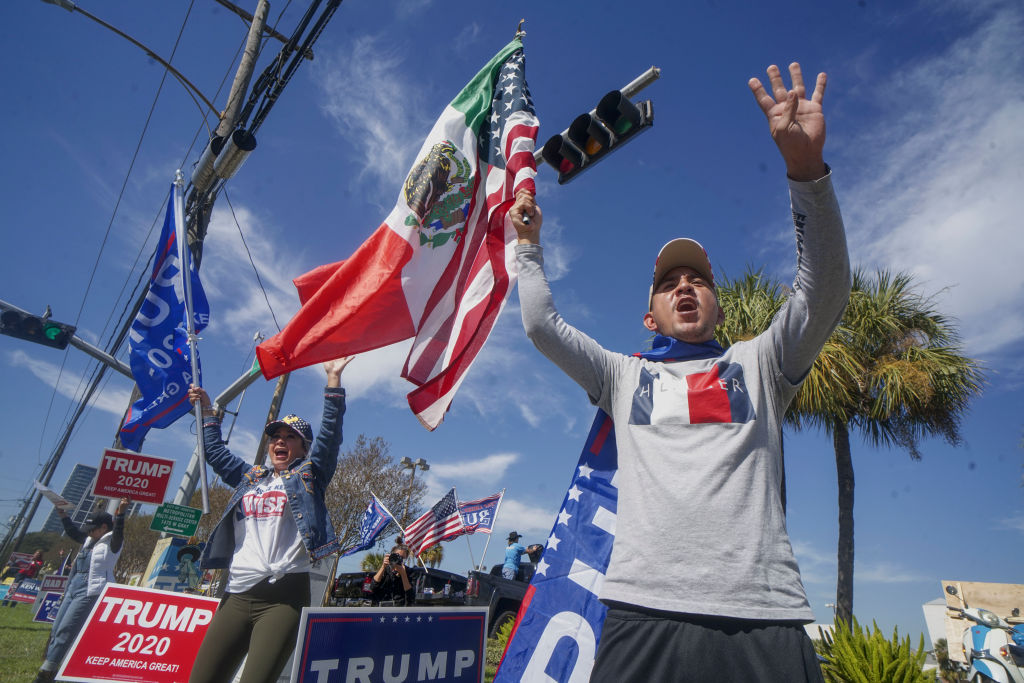From practically the time I could walk until I turned 17, I started every weekday at home in Mexico and crossed into Texas to attend school. Back then in the Rio Grande Valley, the border often seemed more like an idea than a reality – Matamoros and Brownsville were functionally one city, with a stop in between where we would say hello to immigration officers just like we said hello to the mailman, because we were all similar and we mostly all knew each other. Virtually everybody spoke English and Spanish. There was even an annual two-day holiday in both cities, known as “Charro Days” for the Mexican cowboy-like figure, to celebrate our shared heritage.
At the same time, the Texan side was clearly… Texas. I remember when George W. Bush won the presidency in 2000, and people felt a strong surge of pride to see a Texan in the White House. The economics I learned in our private school was basically Reaganomics. Even though the valley traditionally voted “blue,” i.e. Democratic, it was always clear that a strong conservative current ran through the community, and its votes shouldn’t be taken for granted simply because the population is more than 90% Hispanic.

This apparent contradiction (at least in the minds of some) has been put under a global spotlight in recent weeks, as political analysts are still trying to understand why so many people in the Rio Grande Valley voted for Donald Trump on Nov. 3. From the 2016 to the 2020 elections the Democratic party lost a whopping 16 percentage points of the vote on average for each of the Valley’s four counties: Cameron, Hidalgo, Starr and Willacy. Having grown up there, to me it’s no surprise that people in the RGV, as the area is known among locals, voted with issues in mind that go beyond ethnic identity.
Most candidates elected for local office, even Democrats, have tended to be from the political center. Over the past 20 years the Republican vote in presidential elections has fluctuated between 41% and 26%. This is due in part to the overlap of values of some Hispanics with the Republican party’s conservative ideals, especially those that are pro-business and of course Christian values.
What could have caused such a sharp shift in political preferences over the past four years? Based on conversations with family and friends, I think a big reason comes down to family economics. In Texas, 99.8% of businesses are small and in the RGV there is a self-employment rate of up to 14%. Given the pandemic-induced economic contraction, in a place where small businesses are the norm, people are worried about measures that are not pro-economy – and they fear a stricter lockdown under Democratic leadership that would make these very businesses close their doors. Likewise, even though the taxes proposed by President-elect Joe Biden would not impact a majority of people from the RGV given annual household incomes, there are people who fear a large tax increase to fund stimulus relief.
In 2017, one year after President Trump was elected, I was visiting my family and one day, while crossing the border a Hispanic migration officer asked my opinion of the current president. Four or five years ago I would not have hesitated to give a straightforward answer, good or bad. But under the current circumstances, I chose to give a more diplomatic response. After hearing me out, he said: “You know, I used to be a Democrat, but now that I have my career and hard-earned income I can’t bear them [Democrats] taking my money to give to people who are just laying around in their houses. So now I’m a proud Republican, because President Trump protects hard workers”.
Which brings me to a second set of issues: “Abolish ICE” and “Defund the Police.” These movements, which are supported by some but not all Democrats, gained traction in recent years and rub many in the RGV the wrong way. Immigration law enforcement in the RGV is predominantly staffed by Hispanics. Nationwide, Hispanics make up about 50% of Border Patrol agents and 30% of ICE agents. Being an immigration officer or an ICE official are solid career options for people in the area.
Although RGV-specific statistics were not available, in Laredo, another South Texas border city, Hispanics made up 78% of ICE workers in 2015 – which should be similar to the Valley. Likewise, police officers reflect the community’s demographics and there has mostly been a good relationship with law enforcement. The McAllen police department in Hidalgo County reported 95.8% Hispanic police officers in 2013. Increasingly documented police brutality across the U.S., which is the origin of the “Defund the Police” movement, is not as common there. Also, the RGV is notoriously an entry point for drugs into the U.S. and people are especially sensitive to the need of having strong law enforcement. The prospect of defunding the police or abolishing ICE are not options that everyone in the RGV would like to consider.
Clearly these factors have not impacted enough of the population to flip these counties Republican, but they have made a strong dent in a short amount of time. It should be no surprise that voters would be willing to overlook a party’s leadership faults as long as they cover other policy bases that matter to them. Texas may well “turn blue” in coming years. But as those of us who grew up in the Valley know, mere demographics won’t be enough to drive the change.
—
Reina is an editor and the business and production manager at AQ








